Sixty-two days ago, Fletchers moved in on Ihumātao, police at their side. Behind them, their diggers and bulldozers waited, ready to claw up earth to make way for 480 houses in the Puketāpapa block at the feet of Puketāpapatanga-a-Hape. A line of kaitiaki met them, kanohi ki te kanohi — a line that swelled with supporters as the news travelled.
I watched, knowing that this was a historic moment playing out on the other side of Auckland. I didn’t expect that it would affect my identity.
Let me explain . . .
My mother was born in Tauranga — her ancestors trace to England and Scandinavia. My father was born in Nuku’alofa, Tonga. I was born in National Women’s Hospital, in Greenlane, Auckland.
I’ve never felt I belonged anywhere. It seems like an obvious thing to say, since I was not born in a place my people are from, nor in the city my father or mother grew up in. But, as I get older, I realise how this lack of belonging has affected my ability to think, to read maps, to have empathy, to simply exist.
Halfway through 2017, at South Seas Film and Television school, I tried to make a film out of a poem I was writing about Auckland. It was an excuse to film on the cinematic west coast beaches, really. But the more I struggled to write the poem, the more it slithered away from me.
I couldn’t get close to what Auckland means to me, to what it means to be from here. I discarded my first effort, and, searching for inspiration and connection, looked up the meaning of Tāmaki Makaurau in Google: The city of a thousand lovers.
That resulted in a poem about my sadness at having to search for stories of my home town online, about how Auckland is an isthmus on an island, and everything is always blowing over it and through it — the weather, cars across bridges, people through life. Is that why I can’t settle, why I can’t belong?
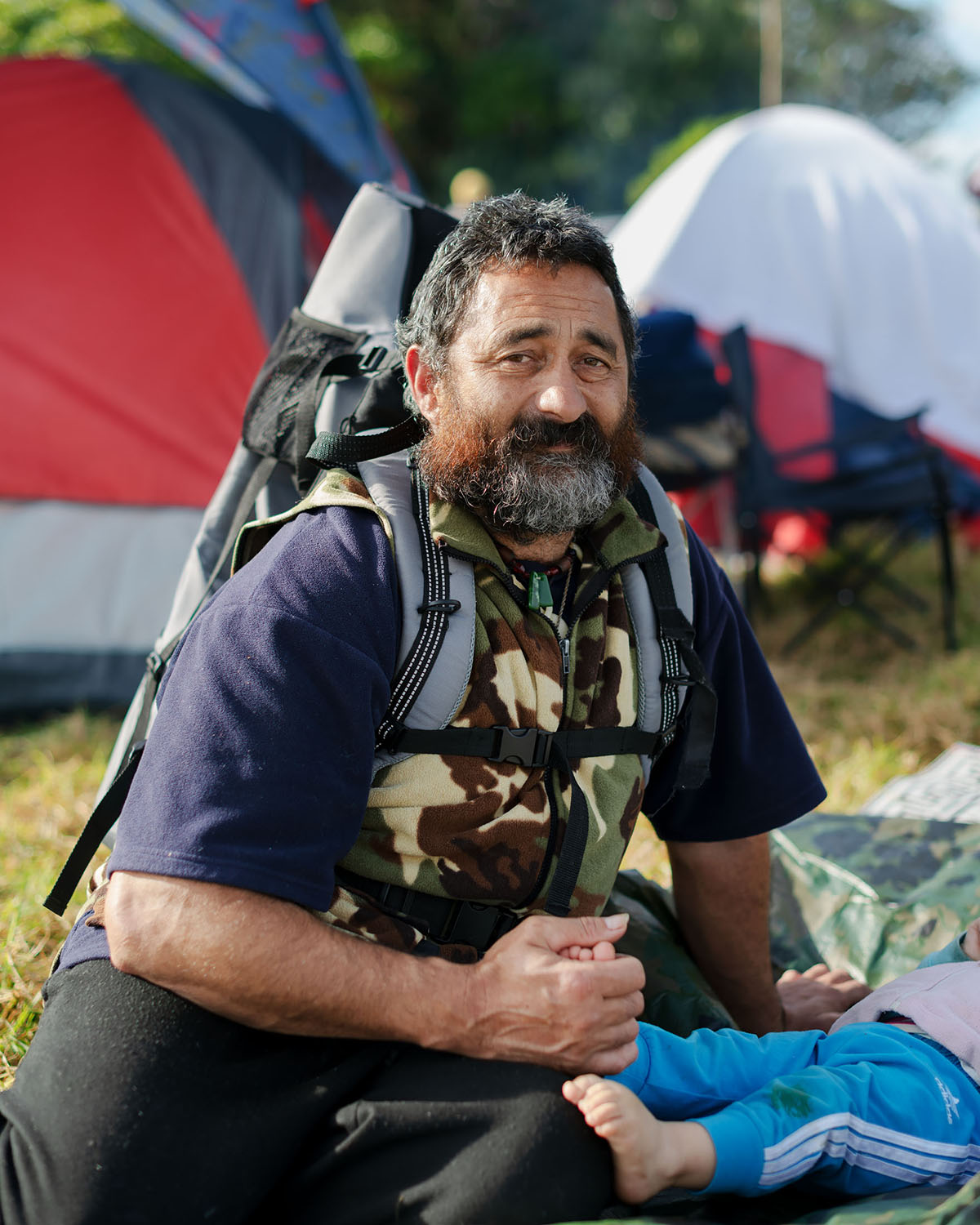
Buchanan
A year later, June 2018, I'm sitting in a cafe with Max Harris (Rhodes Scholar, All Souls Fellow and author). We're talking about possible subjects for a documentary series I’m making for E-Tangata and Tawera Productions called Conversations — the stories of six inspiring Māori and Pasifika women. “Pania Newton,” Max says. It was the first time I’d heard her name.
A month later, driving down Ōruarangi Rd to Ihumātao for the first time, a stretch of water opens up beside me. I feel for a second like I’m flying, like I used to feel as a kid when the car crested hills, but there’s no hill. The waterline looked like a pre-colonial painting I saw in an art gallery with my mother — pristine, untouched.
Then I see the signs. “Fletchers” with a cross through it. “Protect our Sacred River.” I realise I’m seeing the opening to the documentary.
Just after dawn, I pull up to 30 Ihumātao Quarry Road, the little brick farmhouse, sitting amid flattened maunga and ancient stone walls, home for the SOUL (Save Our Unique Landscape) occupation since 2016. Pania is walking up to greet me in her gumboots, which seem to take up a third of her height.
Making the documentary is not good for my health. I have bronchitis for six weeks while filming. Each time I come to Ihumātao with the crew, I’m aware it’s the most pressing of the six stories we’re filming. Each visit brings on a tangle of emotions. The last time I felt feelings like this was when my dad died.
There’s grief about the history Pania shares with us. Governor Grey’s proclamation in 1863, and the eviction of Māori who wouldn’t pledge allegiance to the British queen, and who then set off on the long walk to the Waikato, grieving the loss of their peaceful home. At the Waikato River, they were met with armed constabulary, and many were murdered, Pania says. Later, there was the quarrying of the tūpuna maunga. The director of photography and I climb them and film across the craters, which feel so empty.
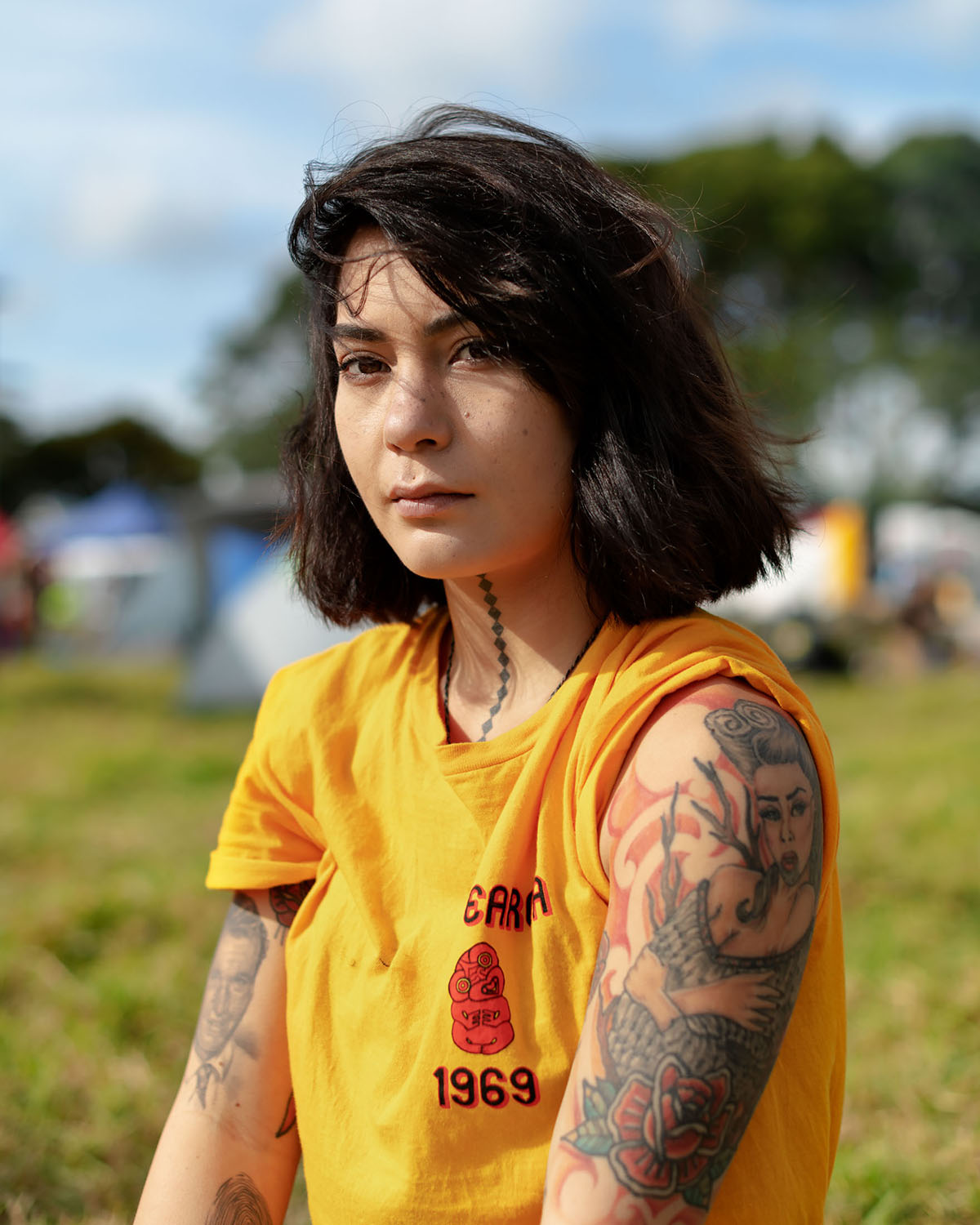
Camille
Over the years, more and more is taken from or done to Ihumātao. Survey work for the second airport runway unearths kōiwi. The Māngere sewage treatment plant and encroaching industrial development pollute the awa and moana.
“When we were kids,” Pania says, “we’d ask our parents why it stank like shit.” We film brown bubbles flowing through the sacred river Ōruarangi into the Manukau Harbour.
I feel afraid — of what’s coming next. Of what the bulldozers will do. I wonder if I’m picking up on Pania’s feelings and mistaking them for my own. It’s hard to tell sometimes.
I also feel a strange elation and oxygenation. I really feel the air coming into me, sparkling air. I think of ancestral spirits moving over the land. I think of the Merata Mita film Mauri, when the young girl runs to the hill to wave as her grandmother’s spirit passes by.
We edit Pania’s documentary first. The first step is to log the footage and take selections of the good stuff. The editor watches the opening shots of the view from Ōruarangi Rd and says: “Ah, yes, Manukau Heads.”
I should know exactly what and where Manukau Heads is, but I don’t. I’ve never looked at it on a map.
During editing, I find out about Takaparawhā, Parihaka, and Pākaitore. It shocks me how much I’m learning, after all the years I spent in school, and then at uni, being educated to master’s level. It’s like I don’t know anything about New Zealand history. It’s not like that — it’s exactly that.
We finish editing, and it’s summer. I make a point of swimming out west, as often as I can. Three years before, on the anniversary of my Dad’s death, my family had dropped flowers into the water at Cornwallis wharf, where he used to fish, and a school of kingfish had followed them out to sea.
I discover another beach, Kaitarakihi, near Cornwallis, and come to it day after day.
It becomes my favourite place to swim, for the cold clearness of it, which feels like swimming at the west coast beaches but without the danger of crashing waves.
One day, swimming at Kaitarakihi, I suddenly recognise the maunga and moana I am looking at across the water: Manukau Heads, the cliffs at Whatipu, the mouth of Te Tai-o-Rēhua, the Tasman Sea. It’s the same landscape you see from Ōruarangi Road and the Ōtuataua Stonefields, at Ihumātao.
I realise I know exactly where I am.
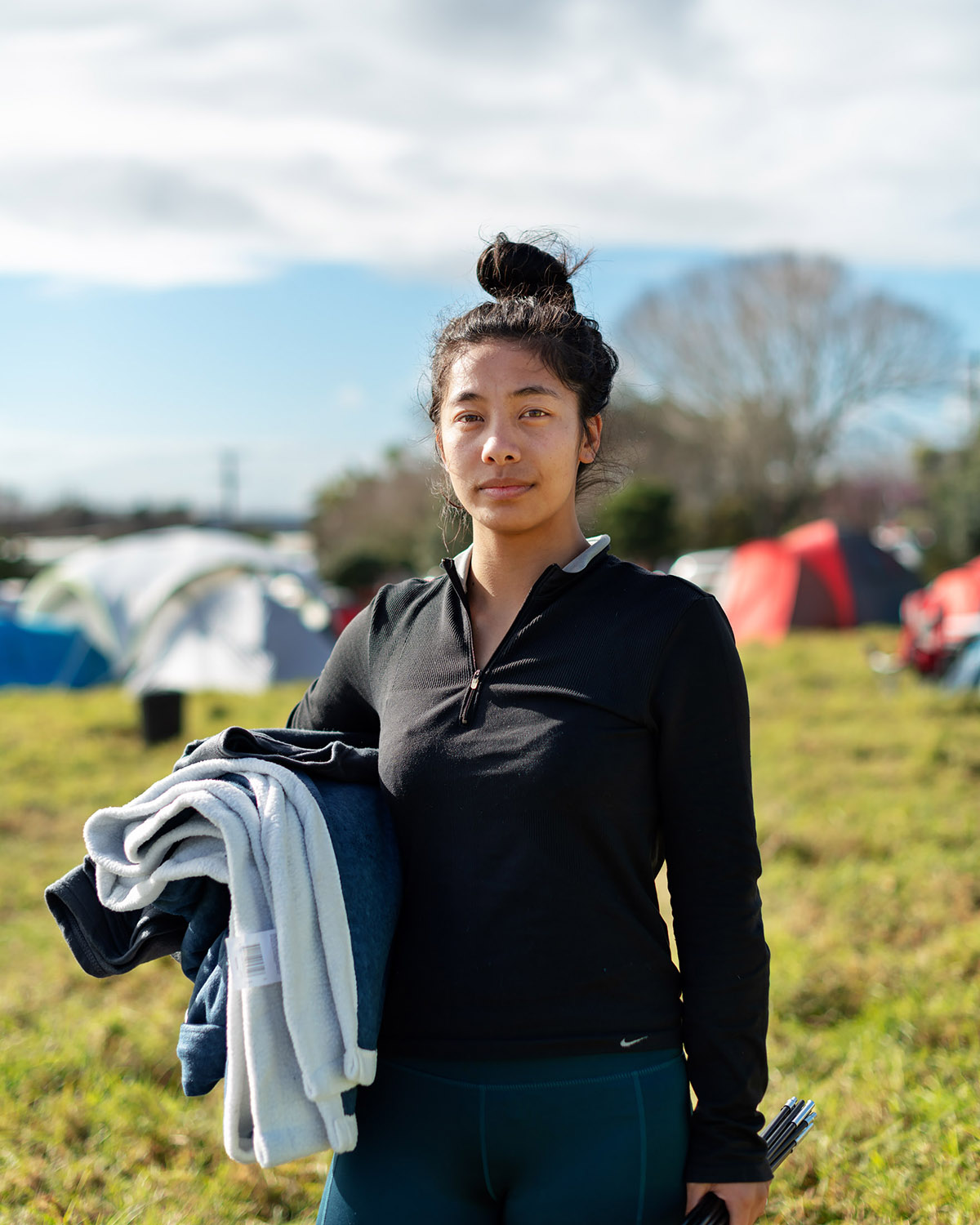
Poipoia
On March 2, 2019, the day the documentaries are released in E-Tangata and the NZ Herald, I drive out to Ihumātao for a fundraising festival, headlined by Ladi6, Che Fu, Upper Hutt Posse and Unity Pacific, to MC the smaller poets and speakers stage, called Karangahape.
There aren’t as many people at the festival as the organisers had hoped for, closer to 3,000 than 10,000. Is the day too hot? Do people care?
Four months later, Fletchers moves in. A call goes out for support, and this time, people flow in to Ihumātao. I watch TV coverage and see that, alongside the placards and the protest chants, there is yoga and meditation. Pania looks deeply tired for the first two days, then steadies and looks charged, with an energy that renews itself. It looks like a peaceful community of revolving kaitiaki is growing at the occupation site.
I want to go and support. Also, I’m afraid of my feelings, that tangled mix, and afraid of being disappointed. That it’s too good to be true. That a peaceful resistance community isn’t something that can happen in Auckland in 2019. We’re too digital, too individualistic, too removed from our roots, not Māori enough, not connected enough, not hospitable enough, for this to be more than a nice idea.
Having leapt into "do good" situations in the past, with high hopes, and been seriously burned, I didn’t want to find that at Ihumātao. Maybe the documentary was enough.
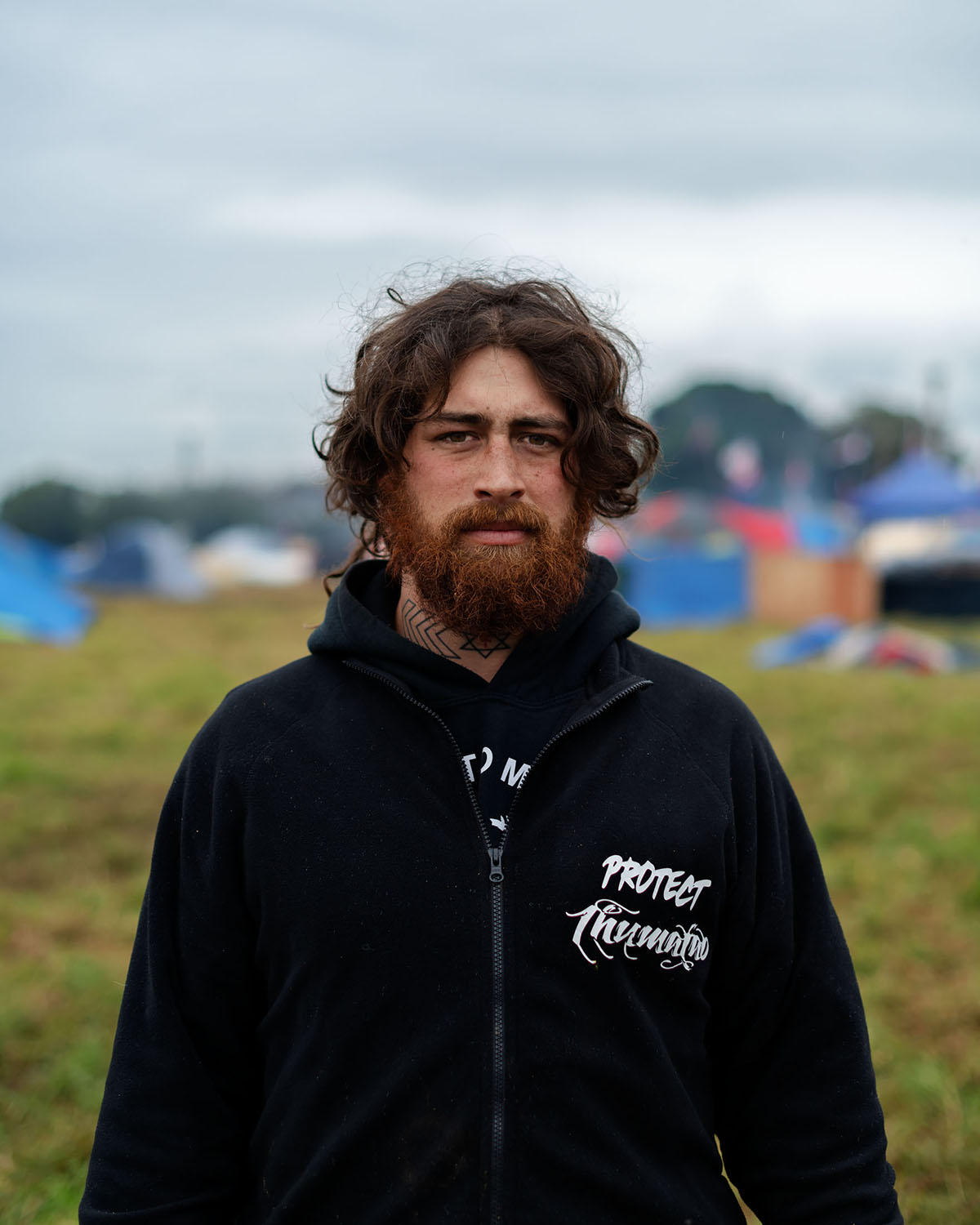
Te Whao
At brunch a few days later, with two Pākehā friends, I ask, “Who wants to go?” and we all do.
Walking down Ōruarangi Rd, past the roadblocks, I run into my friend Grayson, who’s camping there. He calls himself a walking maunga, and the visit starts with a hug.
On the right, there’s the camping site, which is tidy, full of tents. It’s open to walk through. There are a thousand people there, camping and supporting. We pass furry blankets hanging on a line, and a lean-to full of unattended backpacks. On the left, we pass an empty fenced site, where a couple of diggers are sitting in mud. The fence is covered in high quality street art, which makes me think of birds.
The occupation space is at the corner of Ihumātao and Ōruarangi Roads. It’s open, and organised. People mingle. There’s a shed for koha, where I pass over an envelope and get a big hug. There’s a media shipping container, which I’m too shy to pop my head into, a refreshments tent, where kids make themselves Milo, and there’s soy milk. My friend tucks into mandarins. There are three recycling bins and a man who’ll help you figure out which one to use.
There’s lightness and purpose in the air, and lots of kids. A full-on mix of people: ageing hippies, tattooed hipsters, middle-class Pākehā parents, rangatahi, kaumātua, Muslim, Indian, Pasifika. I can’t think of a time I’ve been in such a mixed group. There is a vibe of considerateness, gentleness. People are careful with the kids, and with each other. If you make eye contact, people say “Kia ora,” even if you don’t say it first. It doesn’t feel like Auckland, it feels like how I wish Auckland would feel.
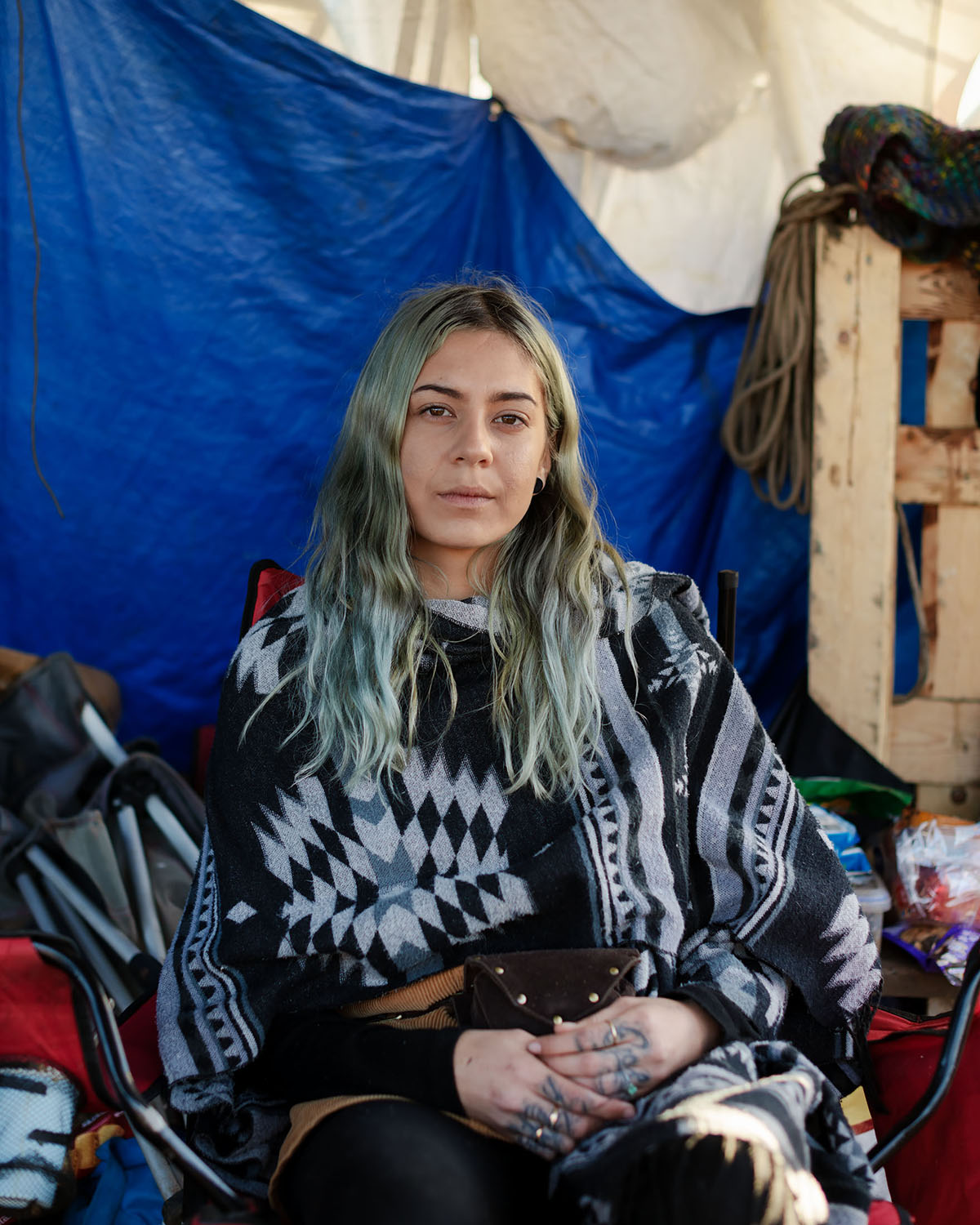
Nikita
The cops are very visible but look like they’re trying to not be, not making eye contact. A kaitiaki hands us cards outlining our rights if arrested.
My friend and I walk through the kai tent, fielding multiple offers of food, and sit across from the frontline. The frontline is 11 canvas chairs, with people sitting in them, fire boxes at their feet. There are wooden benches at each side and across from them, so the frontline is a square with us all facing each other. Food and water are ferried up. You can’t escape the kai.
There are kaitiaki at the frontline, a man and a woman wrapped thickly in winter wear. Their voices emerge and invite us newly-arrived manuhiri to introduce ourselves, to mihi.
A young man with sandy hair and black jeans leaps to his feet. “I’m sorry I didn’t introduce myself earlier,” he says. “I didn’t know you should and I have no reo. I just needed to be here.” The kaitiaki acknowledge him, and he sits back down. I feel a little suspicious. I realise I’m waiting for a flash of annoyance or judgment. I’m not used to manaakitanga. It takes some effort to understand, and accept.
My friend introduces herself, and says she whakapapas to Hawai’i. She looks like a Pākehā gym bunny, with her hands clasped to her chest. The kaitiaki thank her, call her whaea, and tautoko her connection, and her presence.
Pania arrives behind us with a group of visitors and tells a story about Maki — the Maki from Tāmaki Makaurau — and her many suitors. “The ugly Tūhoe boys came down,” she laughs, “and the rugged ones from Ngāpuhi.” It’s the story I asked Google for, but it’s someone like Pania I wanted to hear it from. Someone steeped in history and story, someone standing at her tūrangawaewae. The air feels full of oxygen. I can feel it pressing into my face.
My friend and I wander through the tents looking for the source of the puna wai, the spring of water, that Grayson told us was here. People in a blue tent call out to us, ask if we want help, and point out the source. “We drank from it,” they say, laughing. “Now our lives have changed.”
One young woman says: “Don’t worry about the mud, the water beneath is pure.”
We find the source and it’s clear and bubbling, just as the woman said. I can’t stop looking at it.
Walking back to the car, we look at a poster showing the boundaries of the proposed development on a map and I calculate that the source of puna wai will probably be covered by a house.
As we leave, a kaitiaki wāhine with a loudhailer is stomping through the tents like a camp mother, calling a meeting about waterproofing. Storms are coming.

Kate
A few weeks later, my cousin Karlo Mila, a sociologist and poet, suggests we organise a poetry reading at Ihumātao, and we do, in three days. It’s easy because all the poets we ask say yes. There are 12 poets reading, and more offering to join us. We have to start saying no to them.
It’s a Monday night, August 12, the coldest of the winter so far and violently windy. I ask Karlo if she’d open the MCing because I worry about speaking at the wrong time and offending tikanga. “Of course,” she says. The tent is packed with poetry supporters, occupation supporters, and kaitiaki.
Karlo reads a poem, written that morning, that opens: “I have a dream. Not a Martin Luther King dream, more of a waking dream.” Everyone sits up, attention tightens. It’s a zeitgeist poem.
I read a poem about how I grieved when the trees in my childhood home were cut down. It is a small offering, but again, everyone is listening. Everyone listens to every poet. The poets deliver some of the best readings I’ve heard from them.
We’re laughing together, we’re sad. There’s romance and some jabs thrown about the racial dynamics in poetry. The reading finishes and we’re called for kai, again and again, until we go have some. I know it’s the most important poetry event that I’ve ever been involved in.
“Come to the frontline,” one of the kaitiaki says to me, so I do, treading through two-inch-deep mud, past the dark shifting triangles of tents. The fire boxes are blazing and Pania is there. She’s telling another story to a new group, visiting from another town. They are wrapped so thickly you can hardly see their faces. A shelter wall with an overhang has been put up behind them, so they’re not sitting in the rain. This time Pania talks about her left foot, which was problematic when she was a child, something like a club foot, which corrected as she got older. Her story is about how Hape, the first Ihumātao ancestor, had a club foot, too.
Smoke from the fire blows in my face, and the wind fires pellets of rain. I shut my eyes and listen to her voice: purposeful, like light coming through a tunnel of weather.
I could follow her, I think, surprised at myself, feeling wrapped in the moment, feeling other people listening too, feeling history around me, feeling my feet are somewhere I have come to know, knowing I’ll probably get sick after this. Knowing it’s worth it.

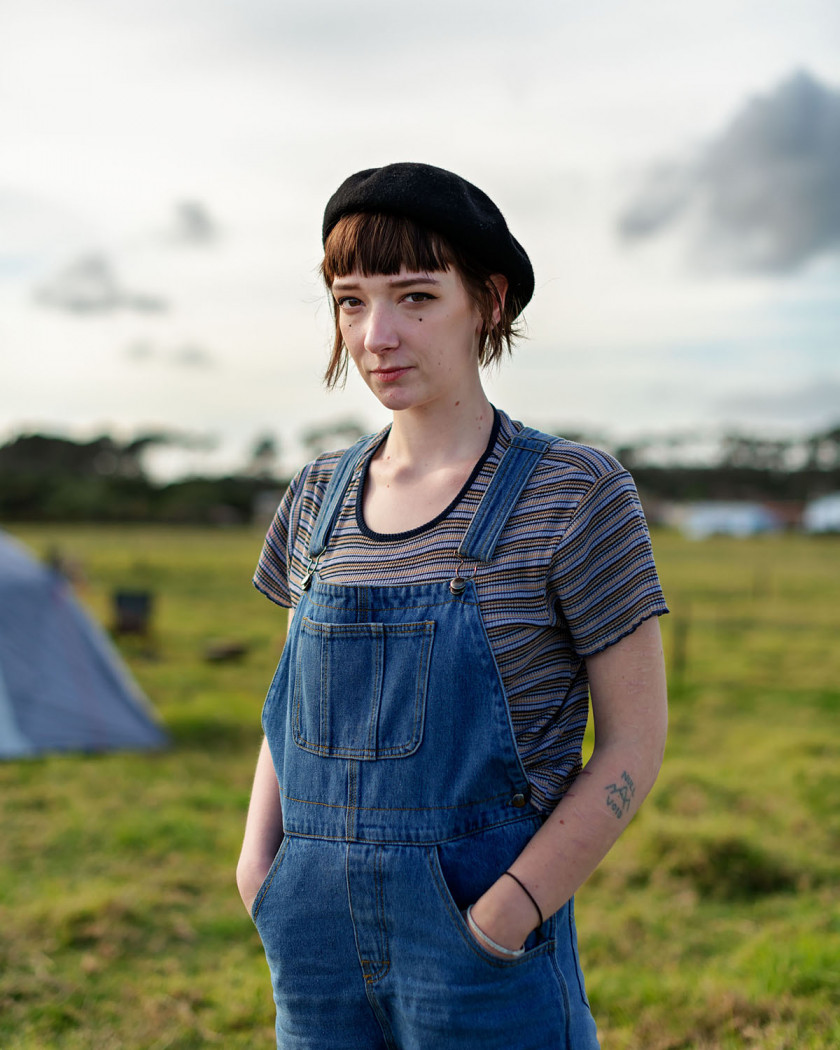
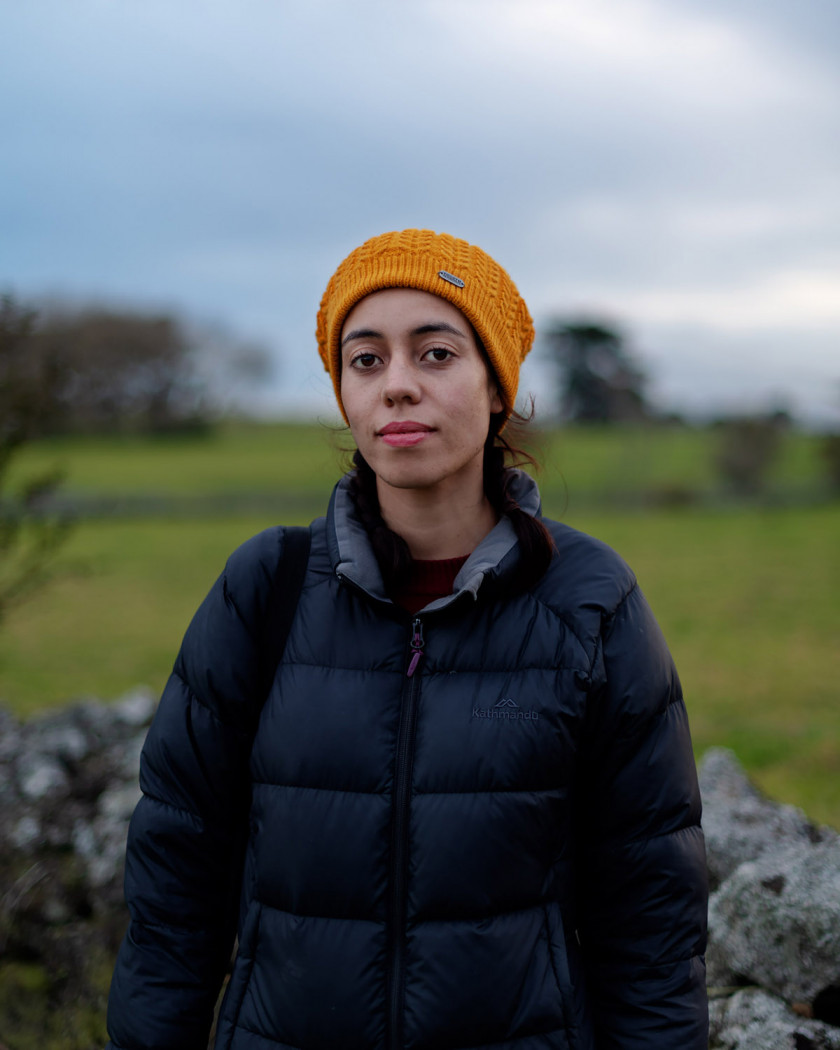
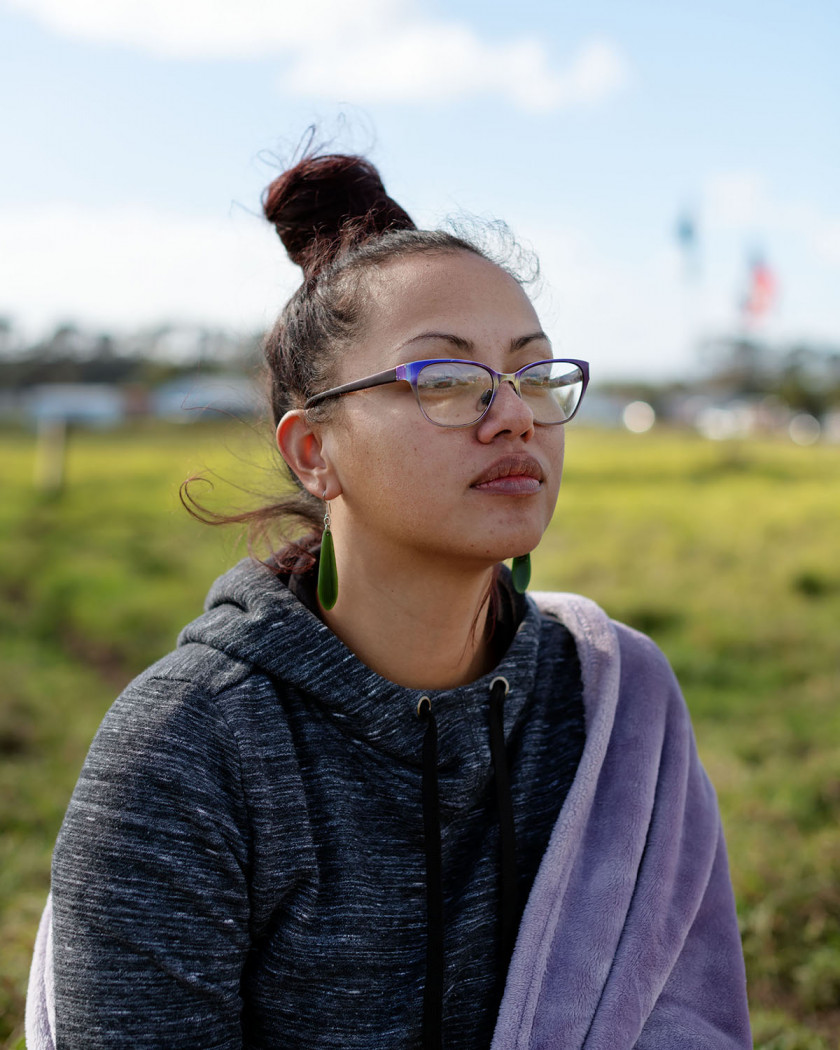
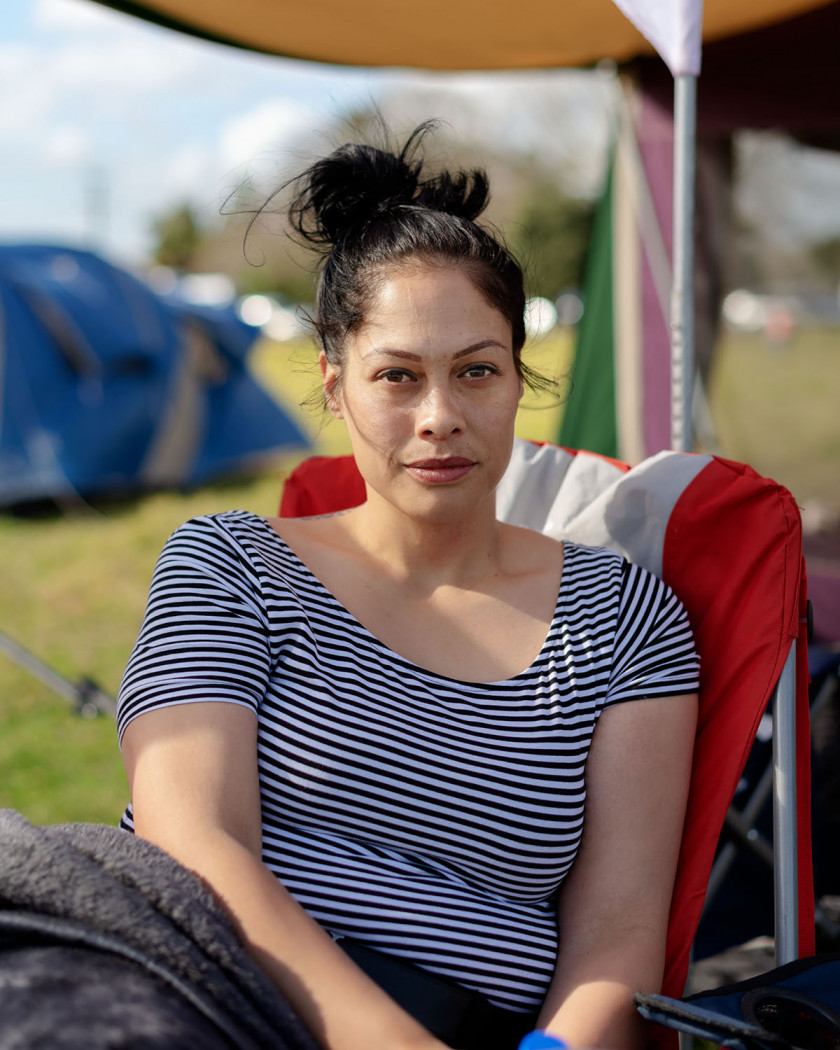
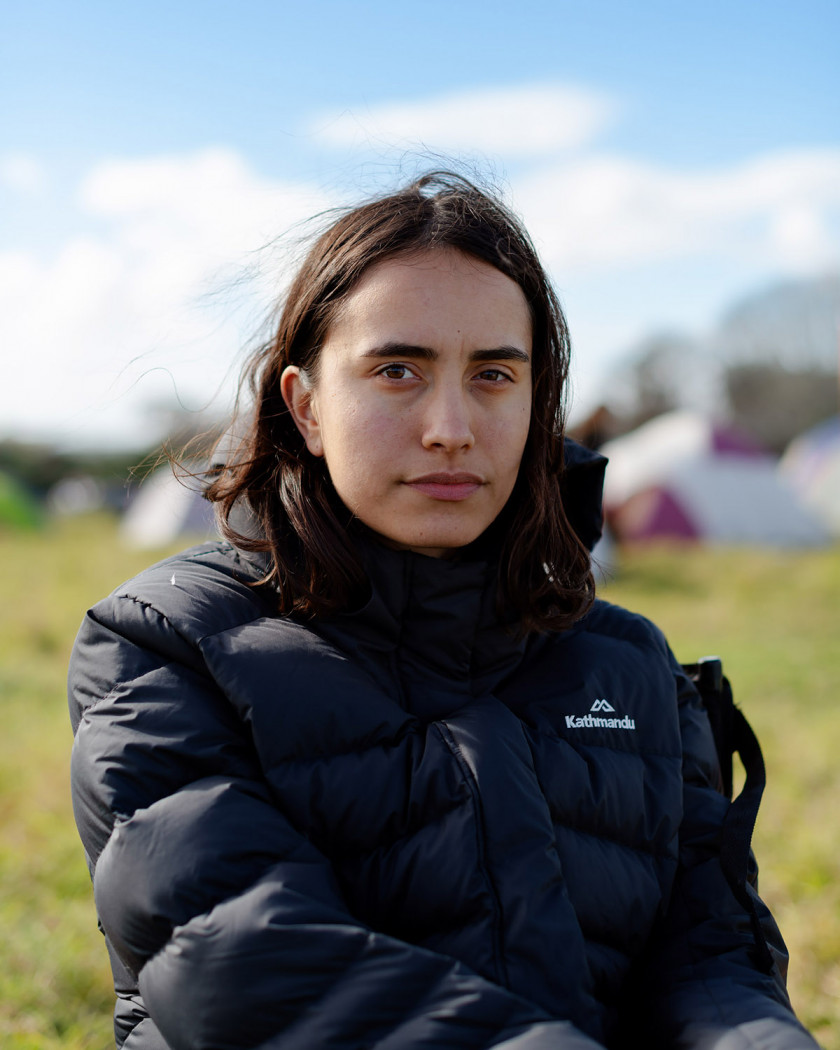
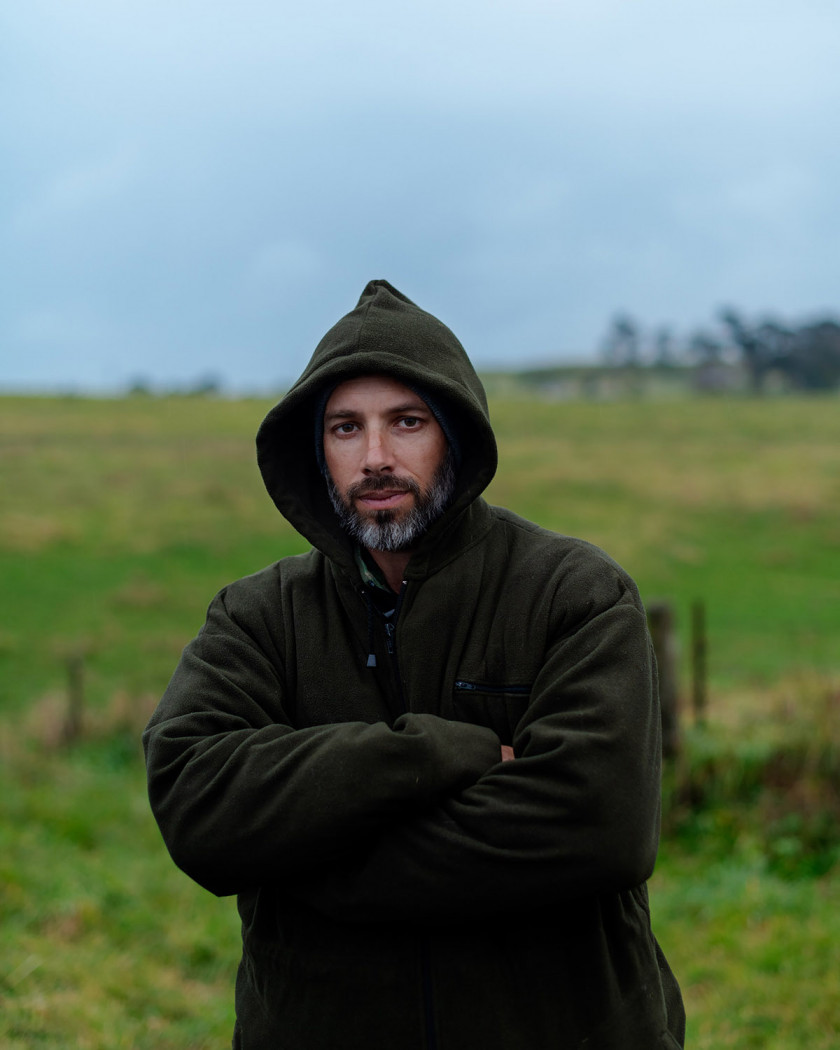
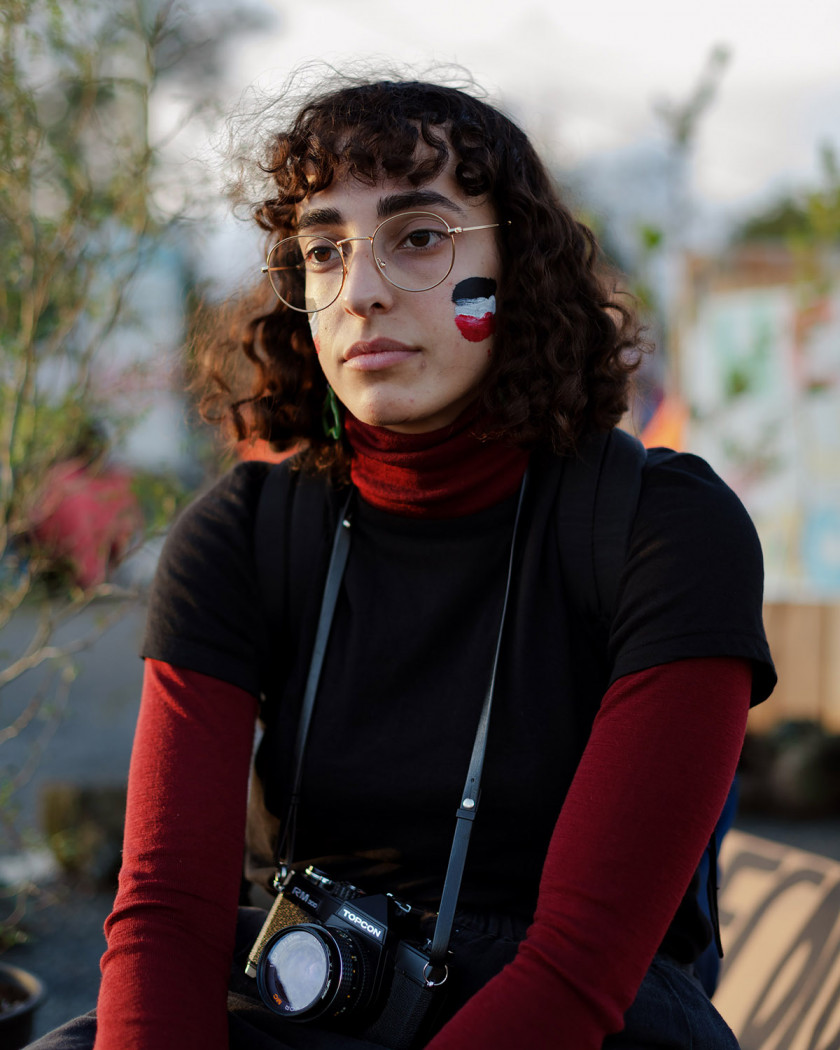
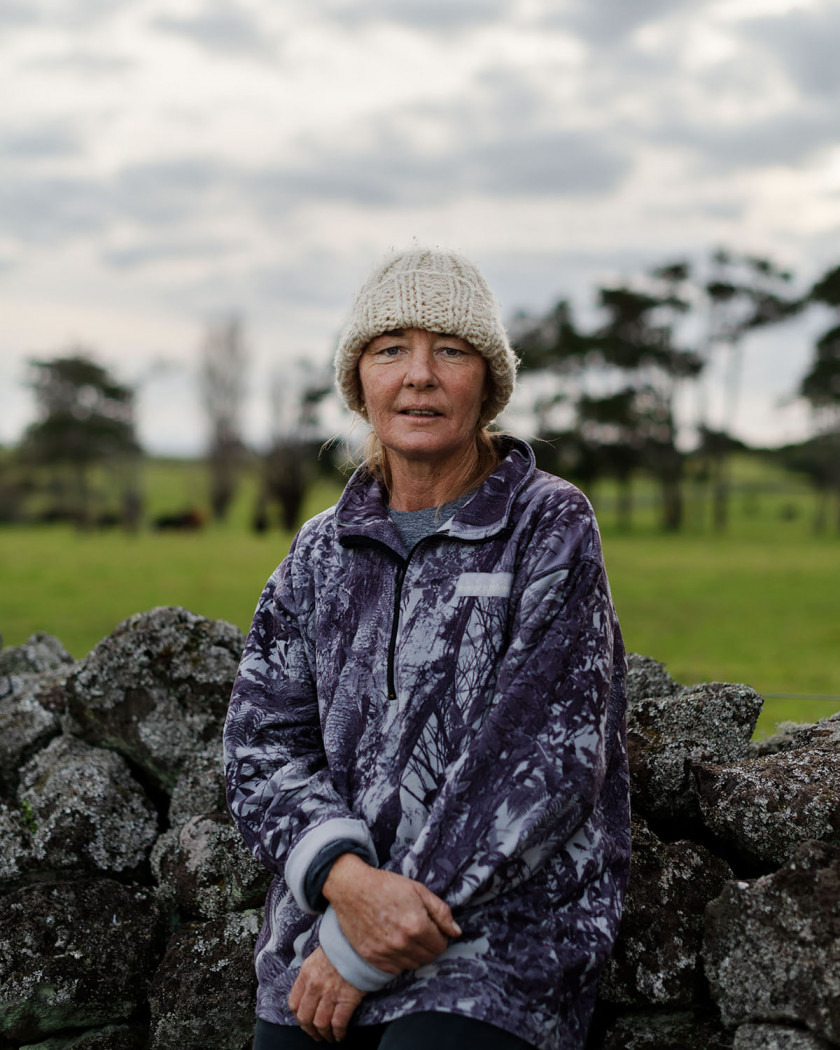
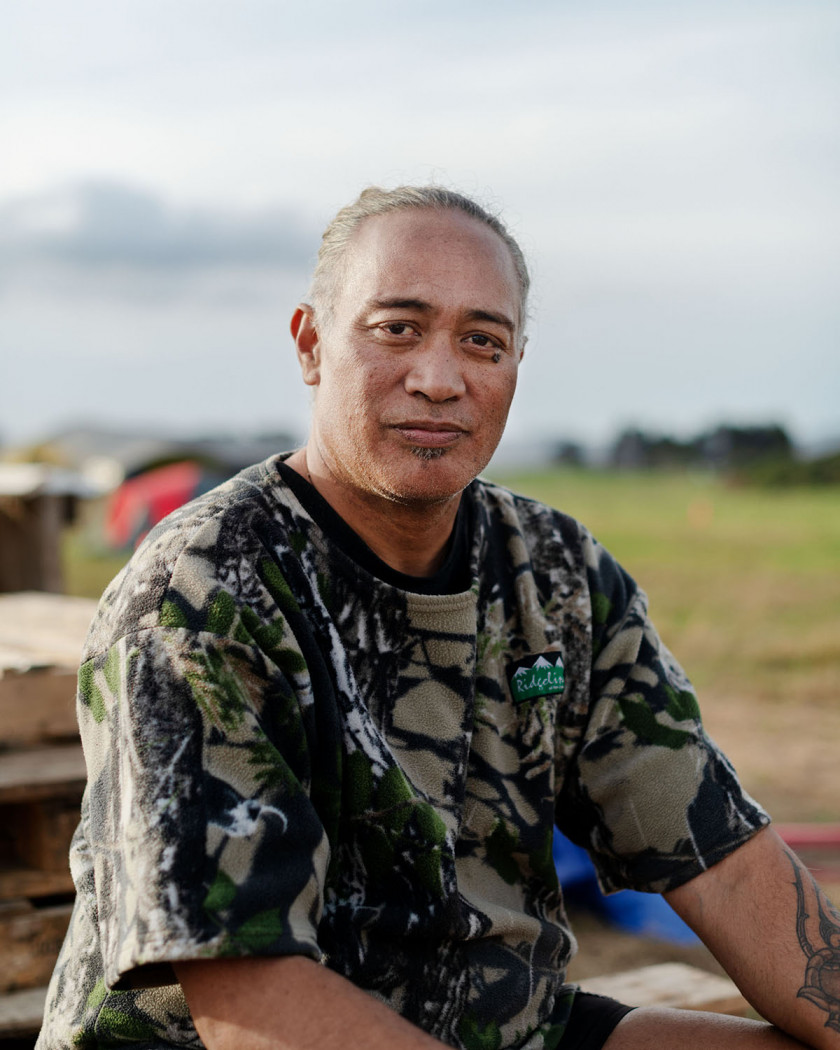
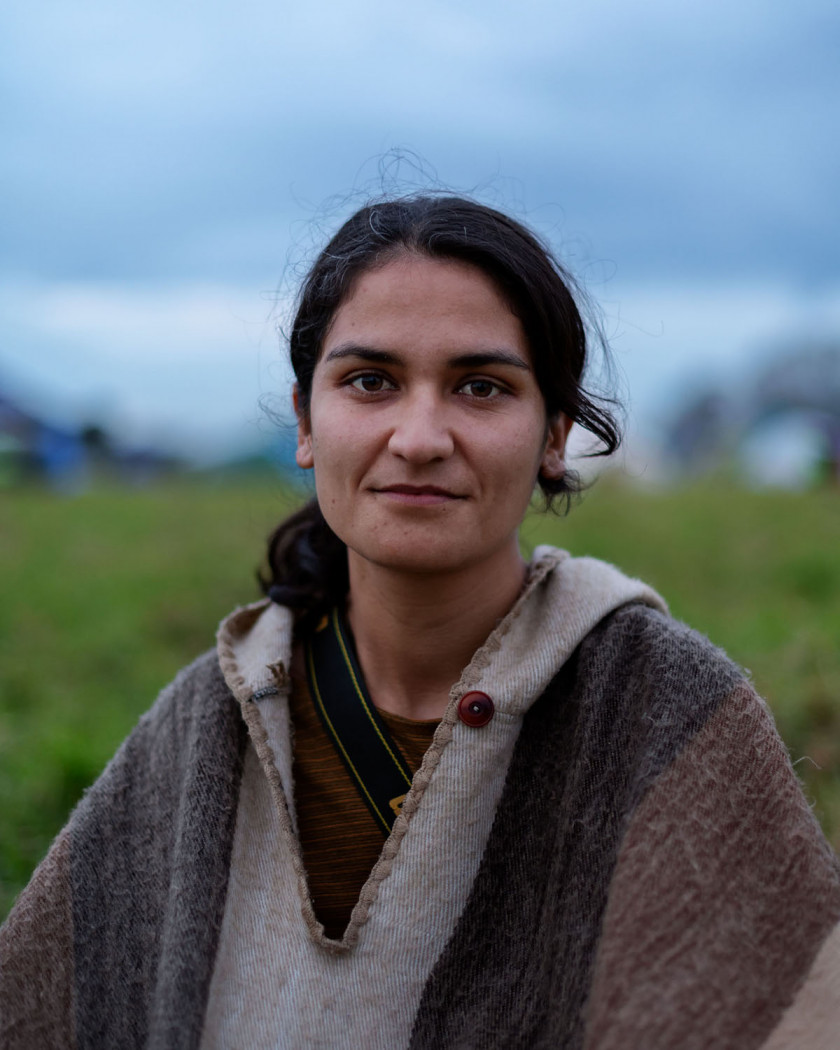
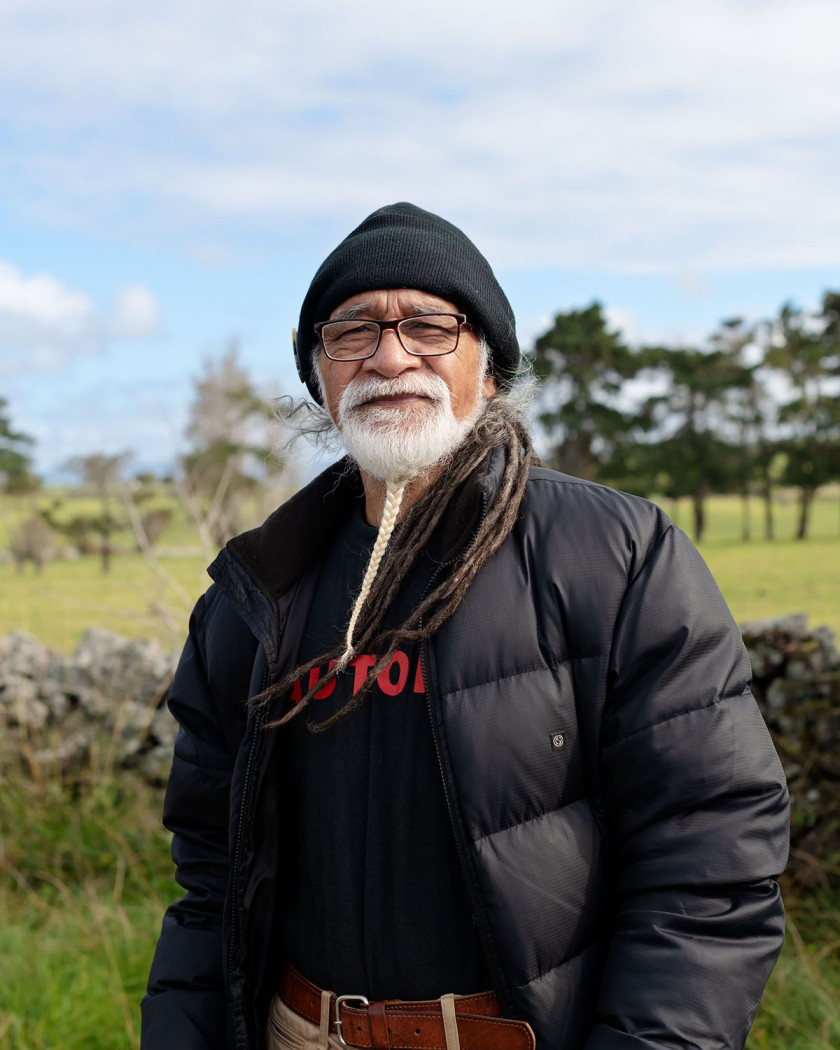
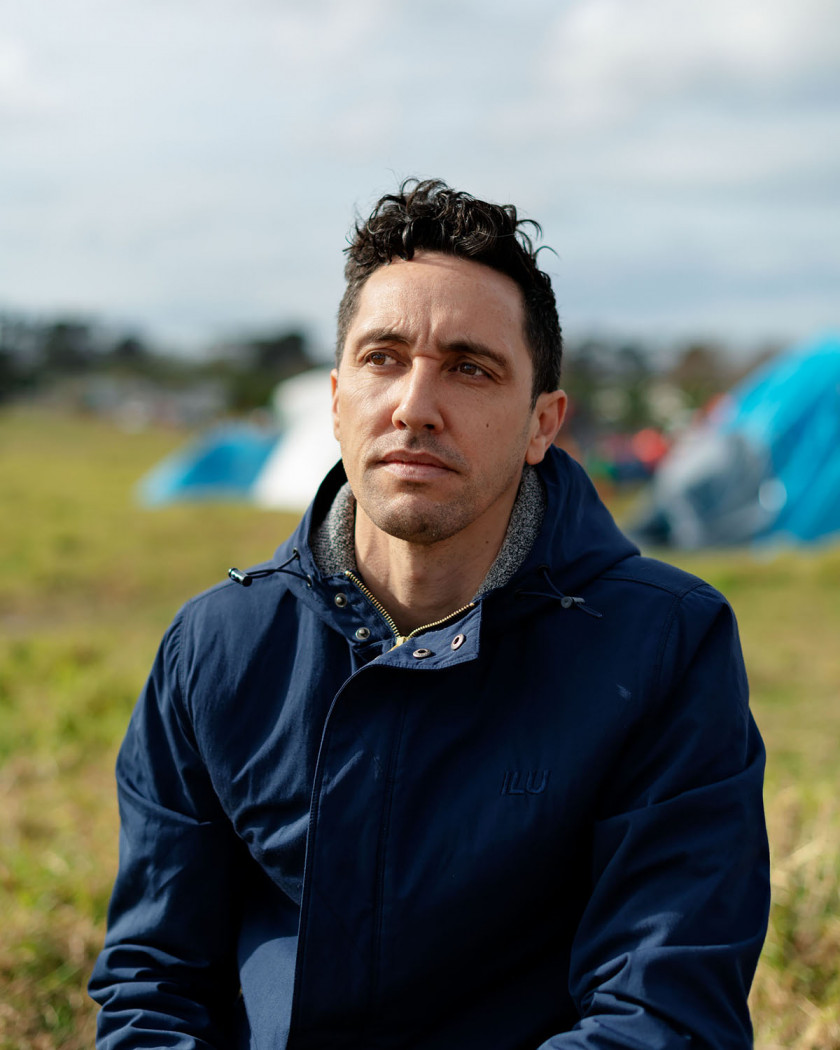
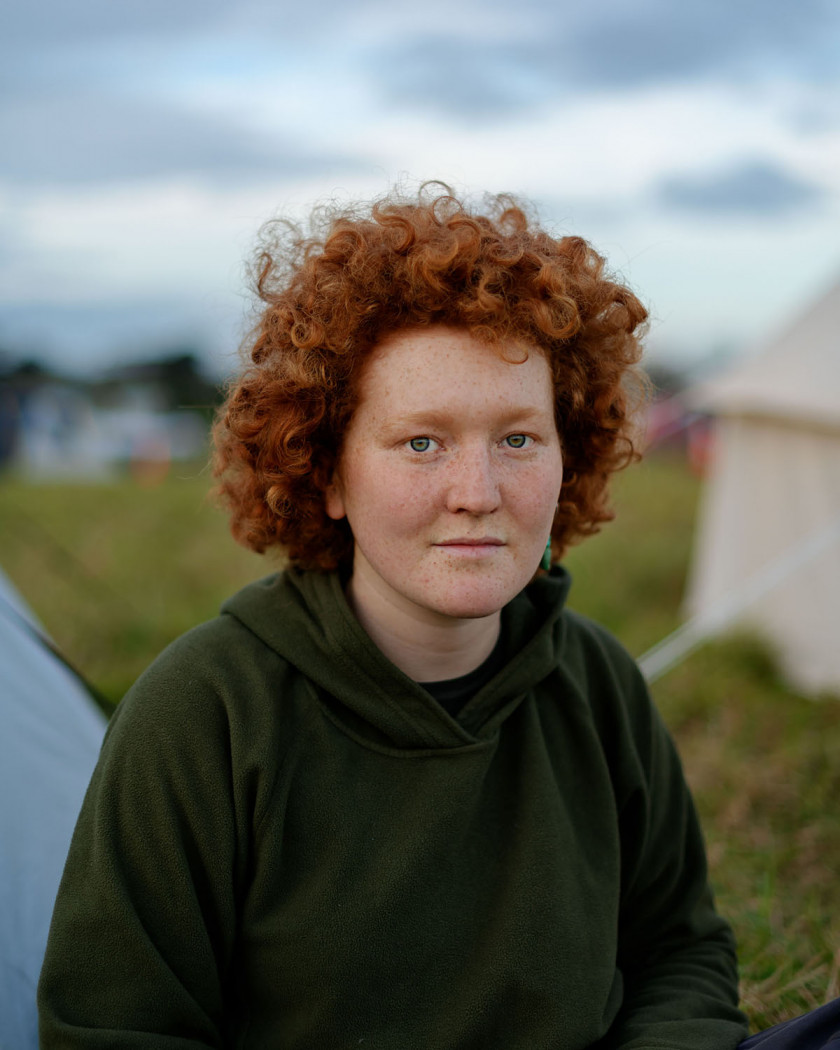
Photos by Chris Corson-Scott
Words by Simone Kaho